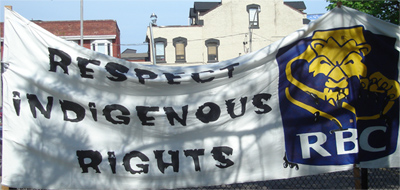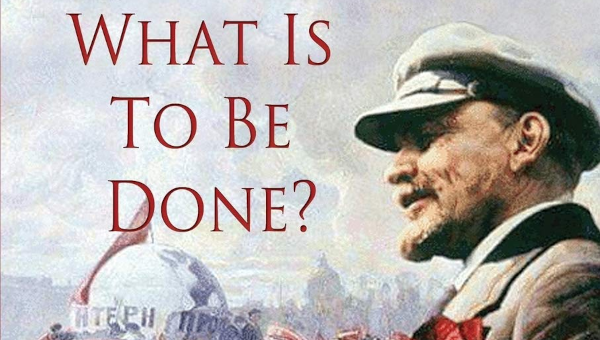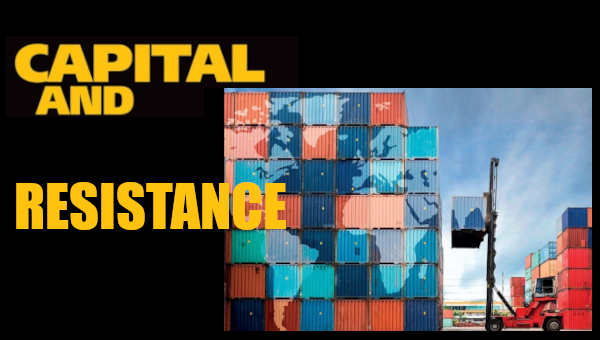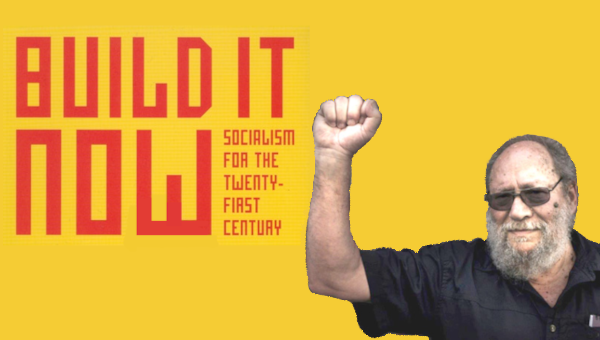The Fire This Time: Burning Bridges
Across Canada, activists have been reacting to the May 18 arson attack on a bank in Ottawa by a group claiming to be politically motivated. The group – calling itself FFFC – set off a fire bomb inside a Royal Bank of Canada (RBC) branch in the Glebe residential neighbourhood near the city’s downtown, and then posted a video of the attack on the internet.

Along with the video, the group issued a ‘communiqué’ in which they suggested that RBC was targeted because of its sponsorship of the 2010 Olympics in Vancouver earlier this year, on stolen Indigenous land, and the bank’s role as the leading financier of the environmentally destructive Tar Sands megaproject in Alberta, which has led to elevated cancer and death rates in First Nation communities living downstream along the Athabasca River, while contributing massively to climate change.
Few amongst the Left could disagree, of course, with a strong condemnation of RBC, Canada’s most profitable and most notoriously immoral financial institution. RBC fully deserves to be challenged, with determination and militancy, whenever possible. However, there is debate on the action taken by the FFFC against RBC. The crux of this debate turns on questions of tactics and strategy.
Political Arson?
Many people have been sharply critical of the arsonists’ use of a tactic that endangered the lives of both nearby residents and the emergency workers who had to deal with the fire (there was also the possibility of there being night workers in the bank cleaning). The actions of the arsonists were irresponsible and reckless. Anyone who has had the unfortunate experience of being in a fire, fighting a fire or treating a fire victim can tell you just how dangerous a fire can be. Fire is very powerful and unpredictable and, even if it was not the intention of the arsonists to do so, it was within the realm of possibility that people could have been seriously injured and/or killed (as occurred in the Greek anti-austerity protests when a bank was firebombed, workers killed, and a huge setback to the momentum to the protests followed). We expect such disregard for human life from the major corporations themselves, not those who oppose them. It is delusional to think that any pain brought on by this action would be borne by the system of capitalism, the state, or even the RBC. You can’t burn those things down. It is business as usual for all of them. In fact, this action has served their interests.
Impact on Organizing
Beyond the condemnations of the very idea of using arson as a political tactic, there are more specific and concrete reasons to raise objections. For the past several months, two important activist campaigns in the country had been mobilizing around the upcoming G8/G20 summit in Toronto at the end of June and against RBC’s role in financing Tar Sands development. In both campaigns, activists had been working tirelessly, trying to build alliances between environmentalists, trade unionists, Indigenous communities, and social justice activists of every sort. Countless hours of meetings had taken place. Countless protests at RBC branches had been held. A series of events had been organized. And all this hard work had begun to bear fruit. Several trade unions have signed on to work as allies with young activist collectives; climate justice advocates have made links with anti-poverty organizers; social justice organizations are building close alliances with student groups; all with a view to mounting a serious mobilization against the G8/G20 summit, as well as putting RBC on the defensive for its brazen greenwashing and blatant hypocrisy. But both campaigns were dealt a blow by the arson attack.
Suddenly – and without the slightest bit of input from activists working on these issues for months or years – a tiny group of individuals changed the whole dynamic of these movement-building projects. Suddenly, pressure has been taken off RBC and the Canadian state, and instead the pressure has been on activists to disassociate themselves from the FFFC attack. Suddenly, the authorities have been handed an all too convenient pretext to justify intensifying surveillance and repression directed against activists in general, and Indigenous activists in particular. Suddenly, radical activists who have been trying for months to reach out to working-class organizations to build an anti-corporate alliance against both RBC and the G8/G20 found their efforts undermined, given that most workers understandably recoil against the foolhardiness of firebombing a building in a residential neighbourhood.
Most activists have, with good reason, been outraged at this inept and self-defeating attempt at manufacturing a supposedly ‘militant’ media spectacle. Some activists, however, have been muted in their criticism. In some cases, they made a point of refusing to condemn FFFC at all. Why this hesitation? It seems clear that what is holding back some activists from speaking out against the arson tactic is that they remain committed to the doctrine of ‘diversity of tactics.’
Diversity of Tactics
In one sense, everyone on the activist Left favours a diversity of tactics. If all that anyone meant by diversity of tactics was that our movements should make room for a variety of approaches to organizing protest, with some opting for more militant and disruptive tactics, and some opting for more low-key and non-confrontational tactics, such as conventional marches or rallies, then who could object? But for most of the people who use this expression, the diversity of tactics doctrine has a very different meaning. In essence, what it means is that one sector of the activist Left, namely those who identify with the tactic of media-spectacle property-destruction, should receive a special exemption from public criticism by other activists, no matter how badly their choice of tactics undermines the organizing efforts of others on the Left. It seems clear that no radical activist would deny that when a social democratic politician, NGO activist, or union official does something foolish and short-sighted, which undermines months of movement-building work by other activists, it is perfectly legitimate for others to subject their actions to critical scrutiny, and to voice their criticisms and insist on accountability. But, in the name of ‘diversity of tactics,’ many people believe that certain kinds of self-styled ‘radicals’ should be exempted from this kind of criticism. The diversity of tactics idea is supposed to serve as a kind of “Get Out of Accountability for Free” card. Unfortunately, this doctrine of ‘anything goes’ threatens to leave the entire activist Left defenceless in the face of the irresponsible and politically disastrous tactical blunders of a handful of individuals.
Fortunately, however, the ‘diversity of tactics’ idea has lost much of the lustre it had a decade ago, as more and more activists have begun to gain practical experience of how damaging it can be to the work they do. Accordingly, some activists are not hesitating to speak out in this case, regardless of the diversity of tactics dogma. For example, arguably the most prominent centre for climate justice organizing in Canada, and the most vocal adversary of RBC’s involvement in the Tar Sands, the Indigenous Environmental Network (IEN), has issued a clear rebuke of the Ottawa fire bombers. The IEN calls for “an effective, transparent non-violent campaign against RBC and their dirty investments” – the polar opposite of what FFFC has called for (a clandestine and ineffectual campaign of senseless arson attacks in residential neighbourhoods). “The Indigenous Environmental Network,” the statement continues, “supports strategic non-violent direct action that is led by impacted communities.” [See full statement below.]
One organization of Ottawa-area anarchists, the local branch of the group Common Cause, has also spoken out against FFFC’s actions. In a statement, they contend that:
“As anarchists, we support the building of revolutionary, democratic, mass movements that will challenge capitalism directly through labour and community organizing and mass direct action such as strikes, picket lines and occupations…. We believe in the power of millions of working-class people standing together against the bankers, bosses, and their state. Instead of isolated acts of property destruction, we need unlimited general strikes of all workers right across Canada and internationally to defeat the attacks on the working-class by the capitalists.”
Increased Repression
The Ottawa arson is a huge gift of May to politicians, allowing them to rationalize turning Toronto into a militarized zone for the benefit of the G20 meetings in June. Conservative Party Federal Industry Minister Tony Clement was quick to make political capital in defence of massive security funding. “Early in the process, people were questioning why we needed so much security,” he says. “Now, no one is questioning it.” Directly following the arson attack there was a request for 500 additional police for the G20 summit (pushing the total number well over the 10,000 previously reported). The arson is paying so many dividends that it is quite plausible that the police already know who committed it, and they are waiting for even more political and tactical benefits before they make an arrest. There is no doubt that the arsonists have provided the perfect foil for the harassment and arrest of activists and the suspension of civil liberties. How this all plays out heading toward the Summit protests remains to be seen.
Who Are The FFFC?
There has been much speculation on exactly who the FFFC are. They have been described in the media as everything from café-dwelling dilettantes to domestic terrorists. A few have cast them as heroes; others have called them misguided; while many others are using much less charitable terms. Due to the damaging impact the arson has had on organizing some people have speculated that they are police agents and/or provocateurs. There is precedent to this as Canadian police have recently been proven to adopt the disguise of black bloc types in order to commit acts that discredit the Left, notably at the Montebello summit a few years ago, and there is a long public history of the role of the RCMP in domestic infiltration of political groups followed by incitement to political violence (and an even more sordid history in the USA). Such acts have, in turn, allowed for greater police suppression of social mobilizations. This possibility should not be completely discounted, but we must be careful not to veer into the realm of conspiracy theory or provide political space that might legitimate such measures. We should, moreover, not let this possibility stop us from engaging in hard debates within the left around issues of tactics and strategy.
Whoever they are, the set of politics that the FFFC espouse is part of a wider tendency in a certain type of Left-wing politics: the tendency to seek minoritarian substitutes for mass action in the face of declining levels of popular struggle. So, when the masses ‘disappoint’ there is a tendency among highly motivated – but also isolated (and sometimes immature) – activists to imagine that there might be an alternative to mass mobilization from below. The disappointed activists may dream of some heroic saviour(s): a band of guerrillas, a terrorist group, a charismatic politician, the ‘black bloc,’ or even the military might of a foreign government. Lacking hope and realism about mass movement-building, a range of panaceas to spark an uprising are conjured up. Sometimes, as apparently in the case of the so-called FFFC, the more unstable types will even try to cast themselves in the ‘saviour’ role.
Hal Draper, the American socialist, harshly described these types as “bumpkin-blowhards of the Big Bang theory of revolution who have been very successful not in tearing apart the System, but in tearing apart what there was of a radical movement that was aborning.”
What Is Radicalism?
It is clear that there are some on the Left who mistake the Ottawa action for a ‘militant’ and ‘radical’ form of protest, a strategic escalation of the struggle. But this is to succumb to confusion about the true meaning of ‘radicalism.’
Radicalism, as Rosa Luxemburg pointed out more than a century ago, is not equivalent to ‘extremism’ in the choice of tactics or strategies. On the contrary, the project of anti-capitalist radicalism – precisely because it is animated by a pressing sense of urgency for victory in the struggle against big business – “must logically grope on its road of development between the following two rocks: abandoning the mass character of the party [political movement] or abandoning its final aim; falling into bourgeois reformism or into sectarianism…” (Reform or Revolution, 1900).
Everyone who understands the severe social damage and grave ecological threat to humanity posed by the agendas of corporations like RBC and the G8/G20 governments will, quite rightly, want to mount a formidable social struggle against them. A strategy of ‘politics as usual’ within actually-existing liberal democracy will rightly be rejected by them as insufficient. Activists should, and often do, demand a more radical strategy than the liberal ‘reformism’ referenced by Luxemburg. This is a strategy of social transformation that attempts to challenge not only the symptoms of social and environmental injustice, but the root cause: capitalism itself.
The impulse toward anti-capitalist radicalism will lead to the ‘rock’ of ultra-left ‘sectarianism’ unless it is integrated with a second impulse: the insistence on maintaining what Luxemburg calls the ‘mass character’ of the struggle. Pursuing this second impulse demands that often marginal and isolated anti-capitalist radicals commit themselves to doing the hard work of systematically reaching out to wider circles of the working-class. It means building bridges and ‘transitional campaigns’ that link the present-day grievances and aspirations of working people with the more far-reaching agenda of fundamental social transformation that anti-capitalists already embrace.
What makes the political project of authentic anti-capitalist radicalism different from, on the one hand, the ‘liberal reformism’ of those who look to mere electoralism as the way to challenge injustice, and, on the other hand, the deluded ‘insurrectionism’ of those who look to FFFC-style tactics, is that radicals persist in pursuing a path that these other sorts of activists tend to renounce: the path of seeking radical social change by means of grassroots mass mobilization. This is a path that seeks to connect with masses of people by means of building grassroots protest movements in which people participate by taking to the streets to fight for social and environmental justice and political and economic democracy. At the same time, though, it is a path that looks beyond the narrow horizons of the ‘realistic politician,’ and sets its sights higher than the ‘reformists’ who accept the limits of capitalism. The radical path aims instead to eradicate capitalism altogether, and with it all forms of exploitation, oppression and environmental destruction.
The Ottawa firebombing fiasco illustrates how strategically important it is to develop a radicalism that succeeds in steering a course between the two dangers to which Luxemburg so vividly draws attention. Those activists who are working today for a revitalization of anti-capitalist radicalism need to distance ourselves in a clear and unhesitating way from the FFFC arson attacks. The ruling elites of our society will want to seize upon all of this to distract public attention from the real issues of social and environmental injustice. For our part, we cannot afford to be distracted from the hard work of drawing workers, students, poor and unemployed people into an alliance against the agenda of both the G8/G20 governments and corporations like RBC. One way to return the focus to this effort would be to affirm publicly our support for the Indigenous Environmental Network’s call for “effective, transparent, non-violent campaigns,” including “non-violent direct action that is led by impacted communities,” both in the anti-G20 organizing and the anti-RBC organizing of the climate justice movement. •
Recommended links:
- Attentat in Ottawa, Dawg’s Blawg, 20 May, 2010.
- The Ottawa Bank Bombing, Daniel Serge, New Socialist, 22 May 2010.
- Cops, Dirty Harry, and Junious Poole, Hal Draper, 27 January, 1972.
- The Coming Insurrection or the Arrival of Suicidal Nonsense?, Chris Spannos, ZNet, 23 July 2009.
- FFFC training camp?
For Immediate Release
Wednesday May 19, 2010
Indigenous Environmental Network (IEN) Statement
on the Royal Bank of Canada Firebombing
Ottawa, ON. In response to the recent firebombing of the Royal Bank of Canada (RBC) in Ottawa, Ontario, Canada, Tar Sands Campaigner of IEN, Clayton Thomas-Muller released the following statement:
“The Indigenous Environmental Network (IEN) is an Indigenous led environmental and economic justice organization that supports community led strategies that enable Indigenous Peoples to continue to maintain the sacred fires of our traditions and to protect our lands and cultures from corporate exploitation and toxic contamination.
First Nations in Canada’s Tar Sands have been waging an effective, transparent, non-violent campaign against RBC and their dirty investments. The Indigenous Environmental Network supports strategic non-violent direct action that is led by impacted communities.
We call on all people who recognize the need to stop RBC’s dirty investments to honour the leadership of frontline Indigenous communities.”
Tom Goldtooth Executive Director, IEN.
Clayton Thomas-Muller Tar Sands Campaigner.





